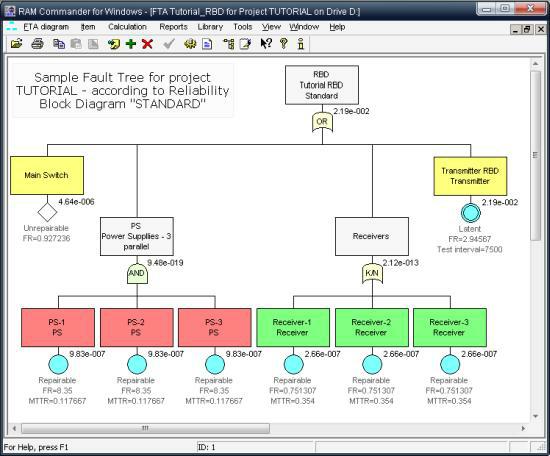
Please contact Colette Handy at CAFTA is designed to meet the many needs of reliability. CAFTA is not currently available for download.
CAFTA FAULT TREE TOOL VERSION 5.4 SOFTWARE
Continue identifying causes for each fault until you reach a root or controllable cause.ĬAFTA is a software application used within the civil aviation industry to carry out event tree and fault tree analysis of complex systems. Connect the ovals to the appropriate fault box. List all applicable causes for faults in ovals below the fault. Using Failure Mode and Effect Analysis is a good way to identify faults during quality planning.įor quality improvement, faults may be identified through Brainstorming or as the output of. Ashlar Hatch Pattern Autocad Blocks there.

CAFTA FAULT TREE TOOL VERSION 5.4 FULL
Smart presentation allows for editing in full screen so that explanation can be more detailed.Handy tools for diagram printing and simple Copy & Paste transfer to other applications.Up-to-date, intuitive and advanced fault tree diagram interface facilitates full control over the diagram: elements layout, themes, colors, styles, zooms, etc.


On top of these is the user-friendly interface allowing simple creation or adjustment of projects. That is why millions of Edraw have been installed all over the world, which are presently being used in major projects of many fields as varied as education, fashion, aerospace, defense, rail, chemical process plant, oil & gas and medical amongst many others. It also helps users identify corrective actions to correct or mitigate problems.Įdraw has built its reputation on the efficiency, precision, stability and ruggedness of its Fault Tree products. The tool helps to identify areas of concern for new product design or for improvement of existing products. It is a graphical representation of the major faults or critical failures associated with a product, the causes for the faults, and potential countermeasures. Fault Tree Analysis can help address the ways of undesirable events could occur by providing you with data showing how and under what circumstances the catastrophic failure or hazards could occur. Designers and analysts have to make better-informed risk assessment decisions based on evaluations of the risks and results related with alternative designs and other risk-mitigating actions. Understand what is likely to happen in the future is prerequisite to make wise plans and decisions.


 0 kommentar(er)
0 kommentar(er)
